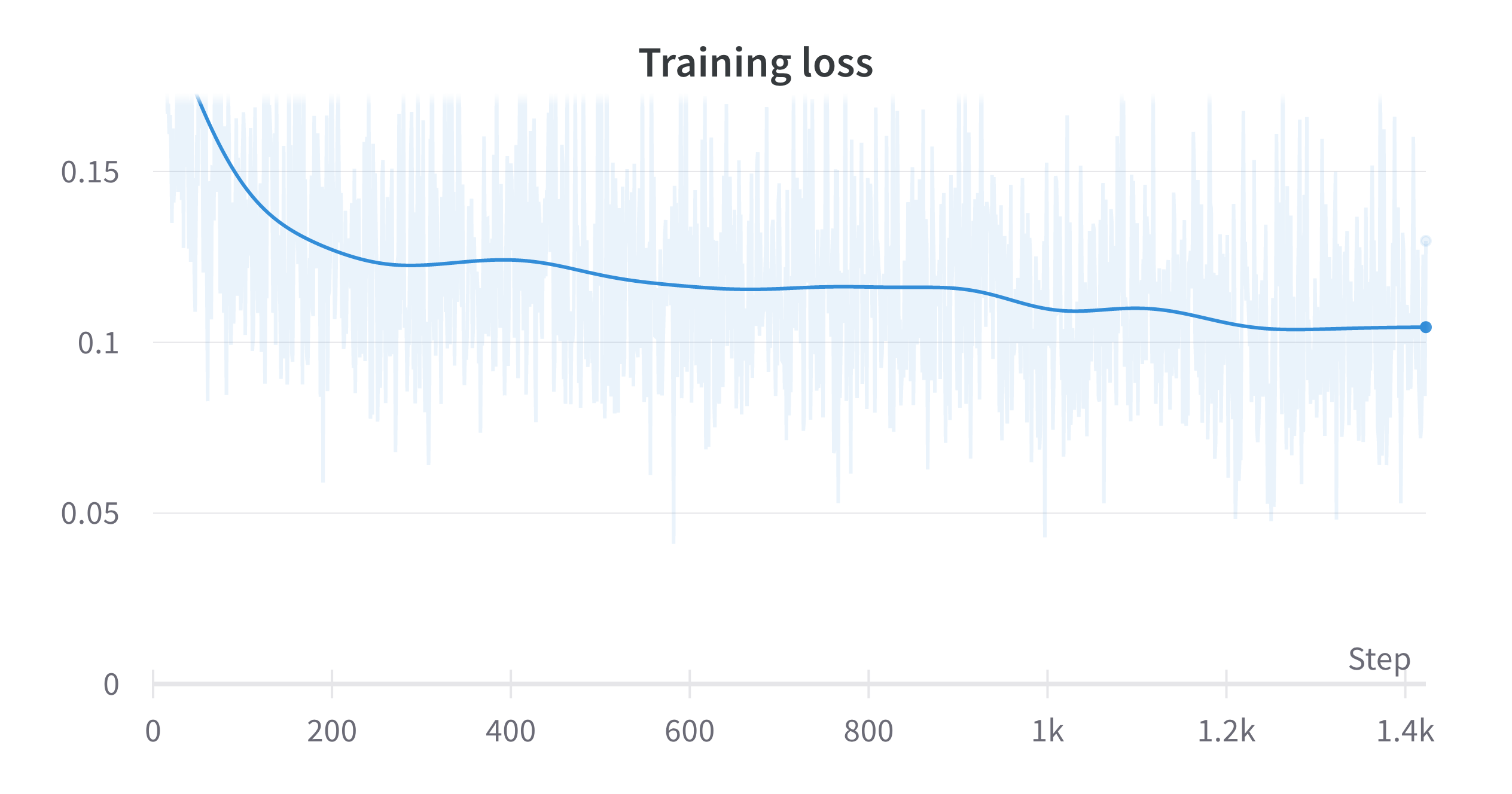metadata
language: da
tags:
- danish
- bert
- sentiment
- text-classification
- Maltehb/danish-bert-botxo
- Helsinki-NLP/opus-mt-en-da
- go-emotion
- Certainly
license: cc-by-4.0
datasets:
- go_emotions
metrics:
- Accuracy
widget:
- text: Det er så sødt af dig at tænke på andre på den måde ved du det?
- text: Jeg vil gerne have en playstation.
- text: Jeg elsker dig
- text: Hvordan håndterer jeg min irriterende nabo?
Danish-Bert-GoÆmotion
Danish Go-Emotion classifier. Maltehb/danish-bert-botxo (uncased) finetuned on a translation of the go_emotion dataset using Helsinki-NLP/opus-mt-en-da. Thus,performance is obviousely only as good as the translation model.
Training
- Translating the training data with MT: Notebook
- Fine-tuning danish-bert-botxo: coming soon...
Training Parameters:
Num examples = 189900
Num Epochs = 3
Train batch = 8
Eval batch = 8
Learning Rate = 3e-5
Warmup steps = 4273
Total optimization steps = 71125
Loss
Training loss
Eval. loss
0.1178 (21100 examples)
Using the model with transformers
Easiest use with transformers and pipeline:
from transformers import AutoTokenizer, AutoModelForSequenceClassification, pipeline
model = AutoModelForSequenceClassification.from_pretrained('RJuro/danish-bert-go-aemotion')
tokenizer = AutoTokenizer.from_pretrained('RJuro/danish-bert-go-aemotion')
classifier = pipeline("sentiment-analysis", model=model, tokenizer=tokenizer)
classifier('jeg elsker dig')
[{'label': 'kærlighed', 'score': 0.9634820818901062}]
Using the model with simpletransformers
from simpletransformers.classification import MultiLabelClassificationModel
model = MultiLabelClassificationModel('bert', 'RJuro/danish-bert-go-aemotion')
predictions, raw_outputs = model.predict(df['text'])
